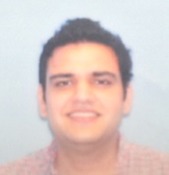Program Information
Radioactive Seed Localization for Breast Lumpectomy - Towards Optimization
M Aima*, N Viscariello , T Patton , B Bednarz , University of Wisconsin, Madison, WI
Presentations
SU-F-J-9 (Sunday, July 31, 2016) 3:00 PM - 6:00 PM Room: Exhibit Hall
Purpose:
The aim of this work is to propose a method to optimize radioactive source localization (RSL) for non-palpable breast cancer surgery. RSL is commonly used as a guiding technique during surgery for excision of non-palpable tumors. A collimated hand-held detector is used to localize radioactive sources implanted in tumors. Incisions made by the surgeon are based on maximum observed detector counts, and tumors are subsequently resected based on an arbitrary estimate of the counts expected at the surgical margin boundary. This work focuses on building a framework to predict detector counts expected throughout the procedure to improve surgical margins.
Methods:
A gamma detection system called the Neoprobe GDS was used for this work. The probe consists of a cesium zinc telluride crystal and a collimator. For this work, an I-125 Best Medical model 2301 source was used. The source was placed in three different phantoms, a PMMA, a Breast (25%- glandular tissue/75%- adipose tissue) and a Breast (75-25) phantom with a backscatter thickness of 6 cm. Counts detected by the probe were recorded with varying amounts of phantom thicknesses placed on top of the source. A calibration curve was generated using MATLAB based on the counts recorded for the calibration dataset acquired with the PMMA phantom.
Results:
The observed detector counts data used as the validation set was accurately predicted to within ±3.2%, ±6.9%, ±8.4% for the PMMA, Breast (75-25), Breast (25-75) phantom respectively. The average difference between predicted and observed counts was -0.4%, 2.4%, 1.4% with a standard deviation of 1.2 %, 1.8%, 3.4% for the PMMA, Breast (75-25), Breast (25-75) phantom respectively.
Conclusion:
The results of this work provide a basis for characterization of a detector used for RSL. Counts were predicted to within ±9% for three different phantoms without the application of a density correction factor.
Contact Email:

